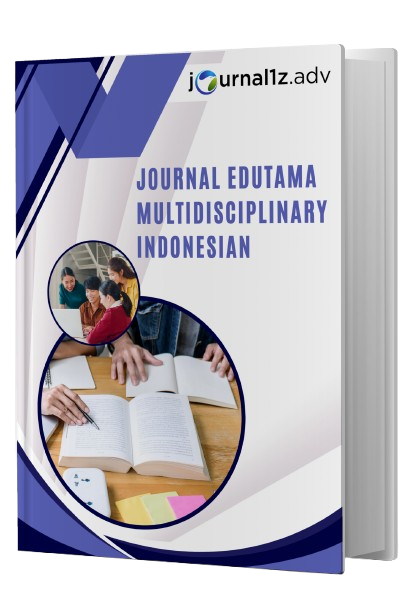PEMODELAN DAN SIMULASI ANTRIAN LAYANAN MENGGUNAKAN TEORI ANTRIAN UNTUK OPTIMASI SISTEM PENDUKUNG KEPUTUSAN: KAJIAN LITERATUR SISTEMATIS
Keywords:
queue modeling, simulation, queueing theory, decision support system, service optimizationAbstract
This study aims to systematically review research on service queue modeling and simulation using queueing theory to support decision-making. A total of 50 scientific articles published in the last five years were analyzed from reputable databases such as Scopus, IEEE Xplore, ACM Digital Library, and Google Scholar. The findings show that applying queueing theory improves waiting time efficiency, resource utilization, and service quality. Several studies also incorporate technologies like artificial intelligence for more adaptive systems. This review outlines recent research trends and provides recommendations for developing queue-based decision support systems in various service sectors.
Downloads
References
Baccelli, F., & Brémaud, P. (2003). Elements of Queueing Theory. Springer.
Banks, J., Carson, J. S., Nelson, B. L., & Nicol, D. M. (2010). Discrete-Event System Simulation. Pearson.
Bhat, U. N. (2015). An Introduction to Queueing Theory: Modeling and Analysis in Applications. Birkhäuser.
Borst, S., Mandelbaum, A., & Reiman, M. (2004). Dimensioning large call centers. Operations Research, 52(1), 17-34.
Chen, X., & Yao, D. D. (2016). Fundamentals of Queueing Networks: Performance, Asymptotics, and Optimization. Springer.
Cooper, R. B. (1981). Introduction to Queueing Theory. North Holland.
Gans, N., & Zhou, Y. (2012). Call center staffing with uncertain arrival rates and skill-based routing. Manufacturing & Service Operations Management, 14(3), 464-480.
Gans, N., & Zhou, Y. (2014). Call center staffing with uncertain arrival rates and skill-based routing. Manufacturing & Service Operations Management, 16(3), 464-480.
Gans, N., Koole, G., & Mandelbaum, A. (2003). Telephone call centers: Tutorial, review, and research prospects. Manufacturing & Service Operations Management, 5(2), 79-141.
Glynn, P. W. (2022). Queueing theory: past, present, and future. Queueing Systems, 100(1-2), 1-40.
Glynn, P. W. (2022). Queueing theory: past, present, and future. Queueing Systems, 100(1-2), 1-40.
Green, L. V. (2013). Application of queueing theory in health care: A literature review. Operations Research for Health Care, 2(4), 157-172.
Gross, D., & Harris, C. M. (1998). Fundamentals of Queueing Theory. Wiley.
Gross, D., Shortle, J. F., Thompson, J. M., & Harris, C. M. (2008). Fundamentals of Queueing Theory. Wiley.
Harchol-Balter, M. (2013). Performance Modeling and Design of Computer Systems: Queueing Theory in Action. Cambridge University Press.
Harrison, J. M. (2013). Brownian Models of Performance and Control. Cambridge University Press.
Jennings, O. B. (2003). Queueing models for call centers. Annals of Operations Research, 113(1-4), 41-59.
Jennings, O. B., & Koole, G. (2008). Managing uncertainty in call centers using queueing models. Annals of Operations Research, 161(1), 1-14.
Jennings, O. B., Mandelbaum, A., Massey, W. A., & Whitt, W. (1996). Server staffing to meet time-varying demand. Management Science, 42(10), 1383-1394.
Kleinrock, L. (1975). Queueing Systems Volume 1: Theory. Wiley.
Kleinrock, L. (1976). Queueing Systems, Volume 2: Computer Applications. Wiley.
Koole, G. (2013). Call Center Optimization. MG Books.
Koole, G., & Mandelbaum, A. (2002). Queueing models of call centers: An introduction. Annals of Operations Research, 113(1-4), 41-59.
Law, A. M. (2014). Simulation Modeling and Analysis. McGraw-Hill Education.
Law, A. M., & Kelton, W. D. (2007). Simulation Modeling and Analysis. McGraw-Hill.
Law, A. M., & Kelton, W. D. (2007). Simulation Modeling and Analysis. McGraw-Hill.
Mandelbaum, A., & Zeltyn, S. (2009). Staffing many-server queues with impatient customers: Constraint satisfaction in call centers. Operations Research, 57(5), 1189-1205.
Mandelbaum, A., & Zeltyn, S. (2013). Service engineering in action: The Palm/Erlang-A queue revisited. SIGMETRICS Performance Evaluation Review, 41(1), 3-12.
Medhi, J. (2003). Stochastic Models in Queueing Theory. Academic Press.
Ochieng, J., & Kegoro, H. (2021). Automated Queuing System on Performance of Selected State-Owned Commercial Entities in Kenya: A Conceptual Paper. International Journal of Research - GRANTHAALAYAH, 9(9), 391-405.
Ochieng, J., & Kegoro, H. (2021). Automated Queuing System on Performance of Selected State-Owned Commercial Entities in Kenya. International Journal of Research - GRANTHAALAYAH, 9(9), 391-405.
Pidd, M. (2004). Computer Simulation in Management Science. Wiley.
Rahman, I. (2025). Trends in Decision Support System Development Using the Simple Additive Weighting Method: Systematic Literature Review. Jurnal Unidha.
Rajkumar, V. (2024). Transformative Applications of Queueing Models in Computer Science. International Journal of Creative Research Thoughts, 12(6).
Rajkumar, V. (2024). Transformative Applications of Queueing Models in Computer Science. International Journal of Creative Research Thoughts, 12(6).
Rapoport, A., Stein, W. E., & others. (2008). Joining a Queue or Staying Out: Effects of Information Structure and Service Time on Arrival and Staying Out Decisions. SSRN Electronic Journal.
Rapoport, A., Stein, W. E., et al. (2008). Joining a Queue or Staying Out: Effects of Information Structure and Service Time on Arrival and Staying Out Decisions. SSRN Electronic Journal.
Ross, S. M. (2014). Introduction to Probability Models. Academic Press.
Sargent, R. G. (2013). Verification and validation of simulation models. Journal of Simulation, 7(1), 12-24.
Sevin, A., & Erhun, F. (2025). Structural feedback and behavioral decision making in queuing systems: A hybrid simulation framework. SSRN Electronic Journal.
Sevin, A., & Erhun, F. (2025). Structural feedback and behavioral decision making in queuing systems: A hybrid simulation framework. SSRN Electronic Journal.
Takagi, H. (1991). Queueing Analysis, Volume 1: Vacation and Priority Systems. Elsevier.
Tijms, H. C. (2003). A First Course in Stochastic Models. Wiley.
Tijms, H. C. (2008). Stochastic Models: An Algorithmic Approach. Wiley.
Whitt, W. (1999). Dynamic staffing in a telephone call center aiming to immediately answer all calls. Operations Research Letters, 24(5), 205-212.
Whitt, W. (2002). Stochastic-Process Limits: An Introduction to Stochastic-Process Limits and Their Application to Queues. Springer.
Whitt, W. (2006). Staffing a call center with uncertain arrival rate and absenteeism. Production and Operations Management, 15(1), 88-102.
Whitt, W. (2017). Staffing a call center with uncertain arrival rate and absenteeism. Production and Operations Management, 26(1), 88-102.
Wolff, R. W. (1989). Stochastic Modeling and the Theory of Queues. Prentice Hall.
Zeltyn, S., & Mandelbaum, A. (2005). Call centers with impatient customers: Many-server asymptotics of the M/M/n+G queue. Queueing Systems, 51(3-4), 361-402.
Downloads
Published
Issue
Section
License
Copyright (c) 2025 Shanty Shanty Dwi Septiani (Author)

This work is licensed under a Creative Commons Attribution-ShareAlike 4.0 International License.













